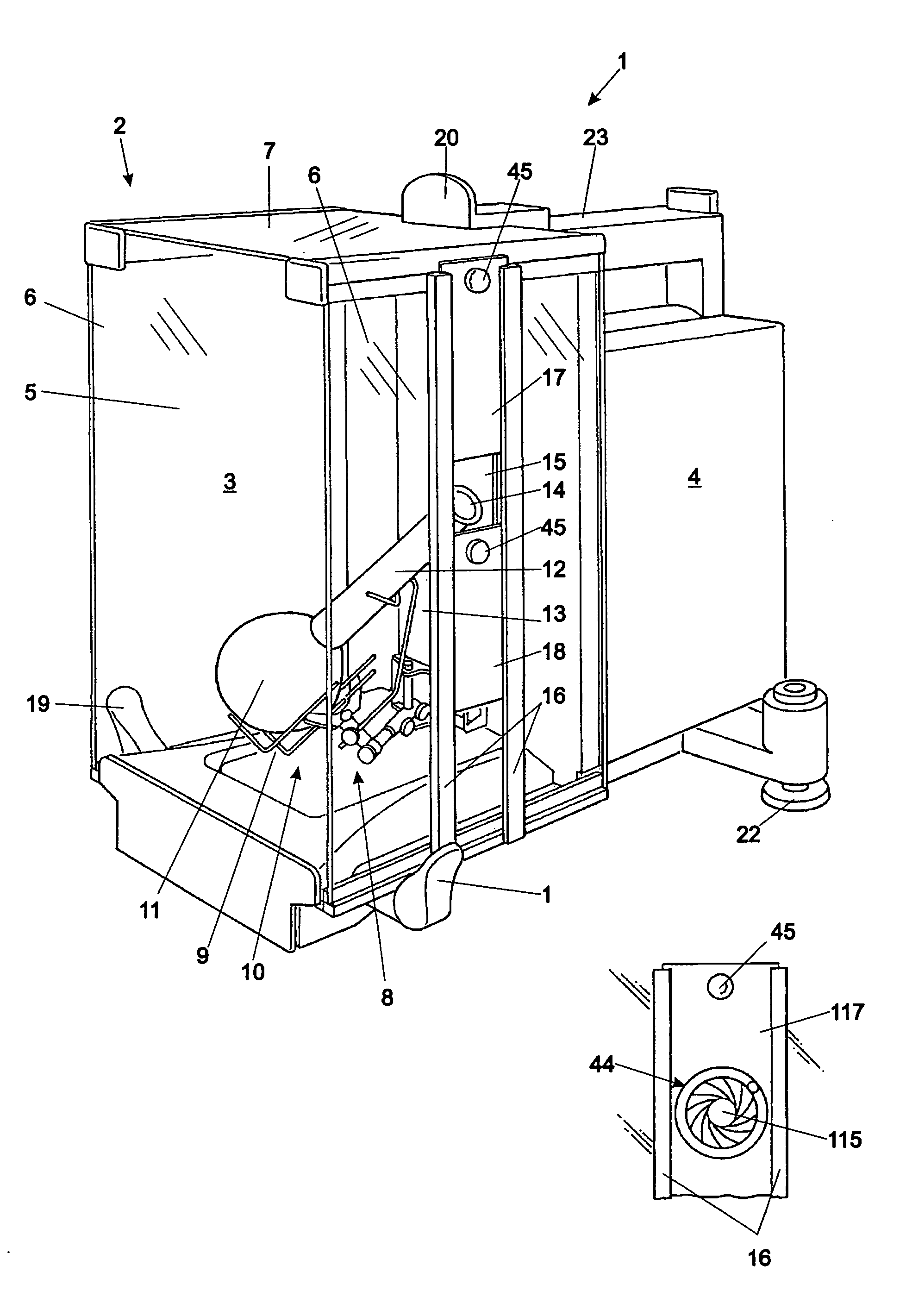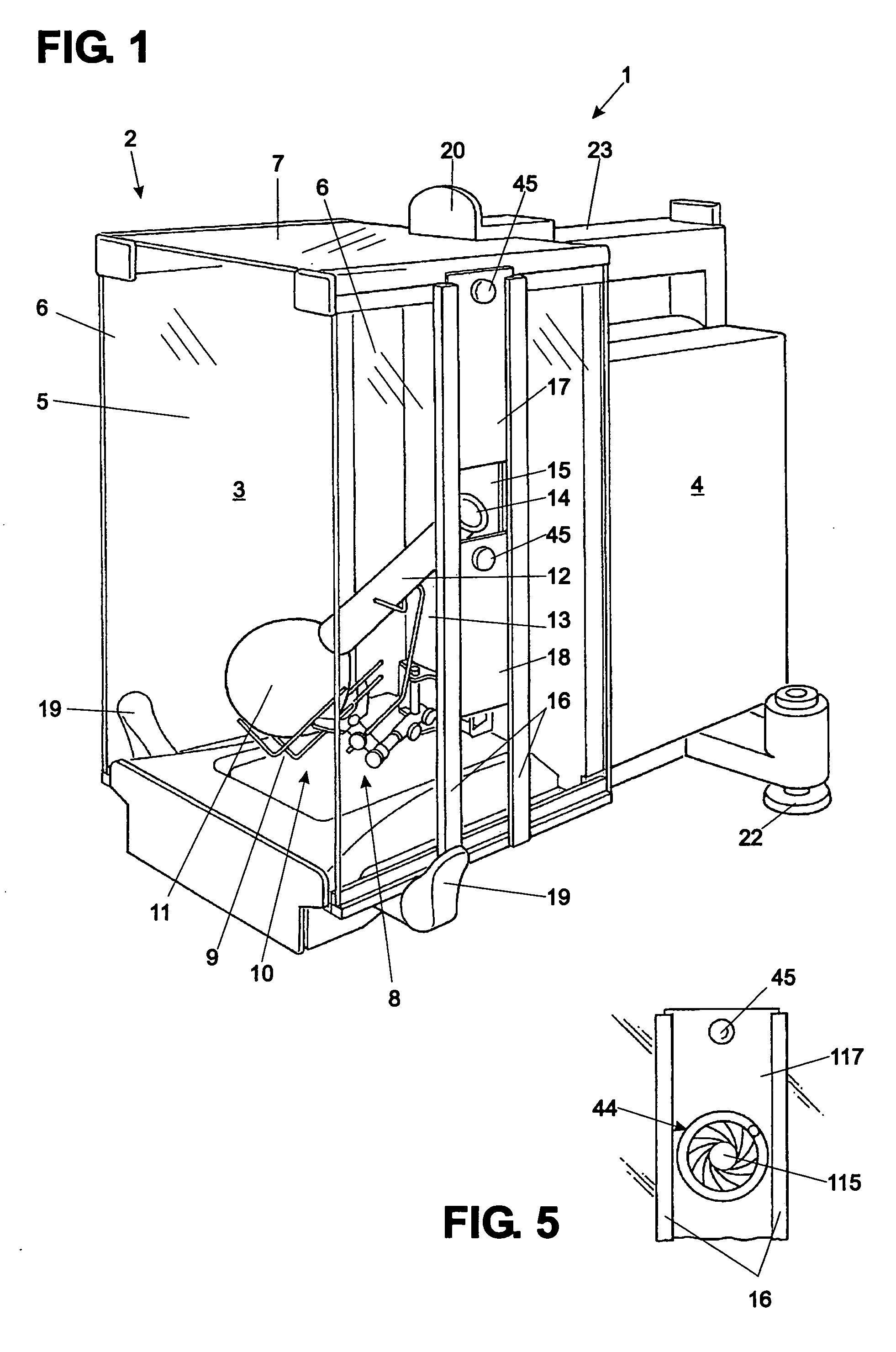Balance with a draft shield
a technology of draft shield and balance, applied in the field of draft shield, can solve the problems of air draft, spillage of weighing material, warming of the air surrounding the weighing receptacle, etc., and achieve the effect of stable weighing conditions
- Summary
- Abstract
- Description
- Claims
- Application Information
AI Technical Summary
Benefits of technology
Problems solved by technology
Method used
Image
Examples
Embodiment Construction
[0027]FIG. 1 shows a three-dimensional representation of An exemplary balance 1 at an angle from the front. In this context, “from the front” relates to the perspective of a user who, when working with the balance 1, has the weighing compartment 3 enclosed by the draft shield 2 facing towards him, while the balance housing 4 which is facing away from the user is referred to as being arranged “to the rear” or “behind” the weighing compartment 3. An indicating—and operating unit is often arranged at the front of the balance 1 but has been omitted in FIG. 1 for clarity. The balance 1 stands on three feet 22, only one of which is visible in FIG. 1. A handle 23 can be used to lift up the balance 1 from the surface underneath, for example to clean the area under the balance.
[0028]The draft shield in this case has a front wall 5 and two sidewalls 6 as well as a top wall panel 7. These walls consist primarily of glass or a transparent plastic. The front wall 5 is arranged in a fixed positio...
PUM
 Login to View More
Login to View More Abstract
Description
Claims
Application Information
 Login to View More
Login to View More - R&D
- Intellectual Property
- Life Sciences
- Materials
- Tech Scout
- Unparalleled Data Quality
- Higher Quality Content
- 60% Fewer Hallucinations
Browse by: Latest US Patents, China's latest patents, Technical Efficacy Thesaurus, Application Domain, Technology Topic, Popular Technical Reports.
© 2025 PatSnap. All rights reserved.Legal|Privacy policy|Modern Slavery Act Transparency Statement|Sitemap|About US| Contact US: help@patsnap.com



